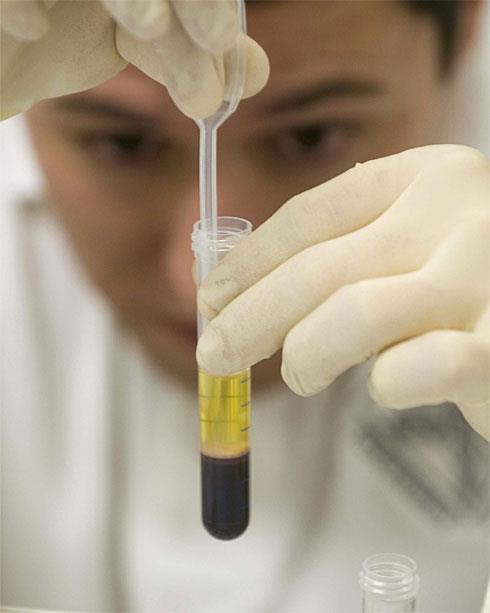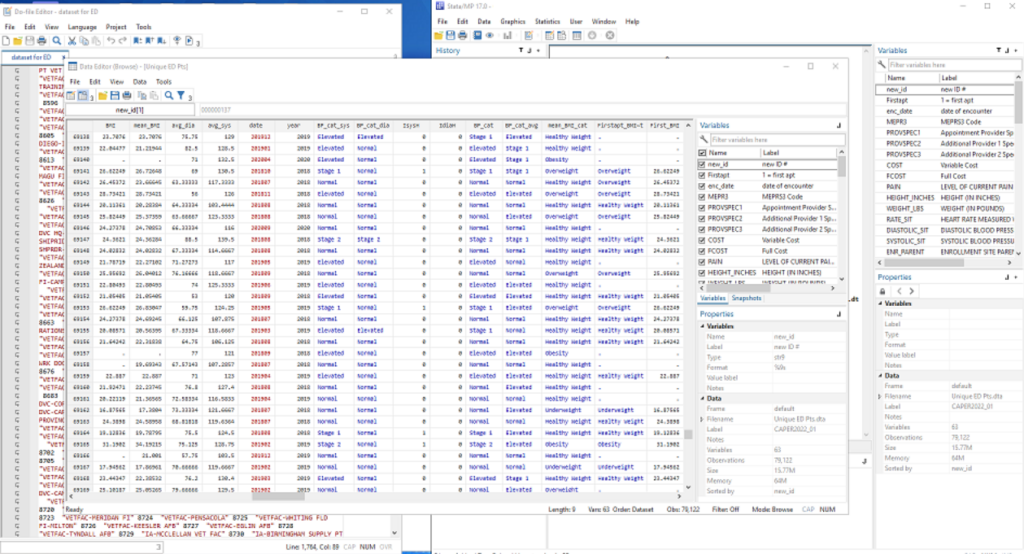8 July 2024
Decoding Data to Drive Military Medical Advances
Researcher to Watch: Thomas Beltran
Thomas Beltran is a research scientist at The Geneva Foundation and a seasoned statistician with more than 15 years of experience in the Military Health System (MHS). He holds three Bachelor’s degrees in Mathematics, Psychology, and Biology respectively, and a Master’s degree in Experimental Psychology. With his expertise in statistical analysis, big data, and machine learning, Thomas has authored over 40 peer-reviewed publications. His technical proficiency and exceptional communication skills have significantly advanced medical knowledge and improved health outcomes for military personnel.
We spoke to Thomas about his extensive expertise and its impact on military medicine.
Your academic background spans Mathematics, Psychology, and Biology, and you hold a Master’s in Experimental Psychology. What inspired you to pursue such a diverse range of studies, and how have these fields contributed to your expertise in military medical research?
Initially, I pursued mathematics due to my interest in computer science and engineering. However, a chance summer internship with the Air Force Research Labs set me on a different path, sparking a curiosity and passion for research. This experience led me to add psychology and biology to my studies, with the expectation of pursuing neuroscience or medicine. Ultimately, I couldn’t pull myself away from the excitement of being on the cutting edge of novel research. This diverse academic background has been invaluable in my military medical research, allowing me to integrate rigorous analytical skills, insights into human behavior, and a deep understanding of biological processes to address complex health challenges.
My interdisciplinary foundation has been pivotal in my work, enabling me to bridge the gap between providers’ inquiries and the data science necessary to tackle pressing issues in military medicine. By melding an understanding of biological and statistical processes, I approach complex problems from multiple angles. Integration of statistical analysis and data science has yielded novel insights, offering a comprehensive perspective essential in the military context, where the well-being and performance of service members current and long-term hinge on numerous interrelated factors.
With over 40 peer-reviewed publications to your name, is there a particular study or project that stands out to you as having had the most significant impact on military health outcomes? Can you share any memorable moments or breakthroughs from that research?
One study that stands out is “A preliminary examination of the comparative efficacy of intravenous versus oral acetaminophen in the treatment of perioperative pain.” This research demonstrated that oral acetaminophen is just as effective as its intravenous counterpart in managing perioperative pain, yet at a fraction of the cost—1000 times cheaper, to be precise. This finding was groundbreaking as it challenged the longstanding preference for intravenous administration simply out of rote habit rather than evidence-based practice.

A memorable moment from this research was the realization of the immense cost-saving potential for military medical facilities. Implementing this finding could significantly reduce healthcare costs without compromising the quality of care for service members. This study underscored the importance of continually re-evaluating and challenging established medical practices to identify more efficient and effective treatments.
Can you provide an example of how you’ve applied your expertise to solve a specific problem in military medical research? What were the results and implications?
One significant application of advanced statistical analysis and machine learning in my work was the development of a model to identify hepatic fibrosis using commonly available measures. Hepatic fibrosis, a precursor to severe liver disease, often goes undetected until it has progressed significantly due to the lack of routine, non-invasive screening methods.
By leveraging big data analytics and machine learning, we were able to create a predictive model that uses routine clinical measures to screen for hepatic fibrosis effectively. This model enables mass screening of at-risk populations without the need for expensive and invasive procedures like liver biopsies. The implications of this breakthrough are profound, as it allows for early detection and intervention, potentially preventing the progression to more severe liver and permanent conditions thus improving the overall health outcomes for service members and lowering the long-term cost burden on the MHS.

You’ve been recognized for your ability to mentor medical and dental residents and prepare training programs. What strategies do you use to effectively communicate complex statistical concepts to those without a technical background, and what has been the most rewarding aspect of this mentorship?
Effective communication of complex statistical concepts to individuals without a technical background requires a few key strategies. Firstly, I focus on simplifying the concepts by using analogies and real-world examples that are relatable to the audience. Breaking down complex ideas into smaller, more manageable parts helps in gradual understanding of the big picture. Additionally, I employ visual aids like charts, graphs, and infographics to illustrate data trends and statistical principles visually.
The most rewarding aspect of mentorship has been witnessing the growth and development of residents. Seeing them gain confidence in their ability to handle complex data, design robust research studies, and ultimately present their valuable insights through research has been incredibly fulfilling. Their successes and advancements reflect the positive impact of effective mentorship and training.
Geneva drives military medical research with a focus on improving health outcomes for service members. What areas of military medical research do you believe hold the most promise, and how do you see your work contributing to these future advancements?
Looking ahead, I believe that the integration of artificial intelligence (AI) and big data analytics holds the most promise for advancing military medical research. These technologies have the potential to revolutionize healthcare by enabling personalized medicine, improving diagnostic accuracy, and optimizing treatment plans based on site resources and individual patient data.
My work is contributing to these advancements by leveraging AI and big data to identify new methods and improvements to healthcare problems. For instance, predictive modeling and machine learning algorithms can be used to anticipate health issues before they become critical, allowing for early interventions and better management of chronic conditions. Additionally, big data analytics can uncover hidden patterns and correlations in vast datasets, leading to new insights and innovative treatment approaches. By continuing to apply these advanced techniques, I aim to enhance the precision and effectiveness of medical care for service members, ultimately leading to better health outcomes and improved readiness and resilience of the military forces.
Disclaimer: The views expressed do not reflect the official policy of the Army, the Department of Defense, or the U.S. Government.

Looking ahead, I believe that the integration of artificial intelligence and big data analytics holds the most promise for advancing military medical research.
Thomas Beltran


